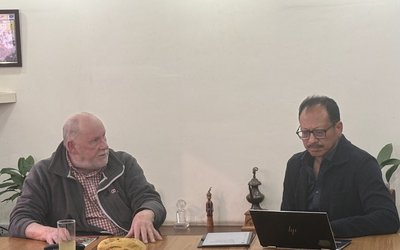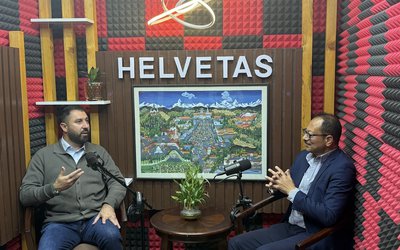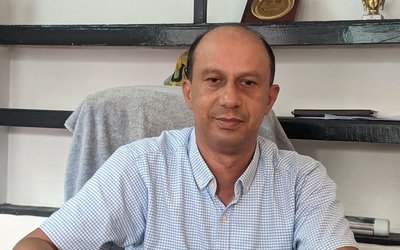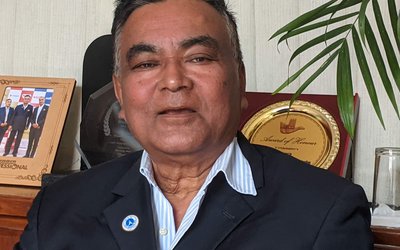More on Interview





United Nations Development Program (UNDP) has been one of Nepal’s leading development partners. From peace building to constitution writing UNDP is supporting Nepal’s constitution and peace building process as well. Nepal has already made progress in Millennium Development Goals, Shoko Noda, UNDP Country Director of Nepal, spoke to New Spotlight on various issue. Excerpts:
In the last four years, Nepal has been passing through very critical phases in constitution writing and peace process, how do you see it and what is the role of UN?
The drafting and adoption of a new constitution by a democratic, representative and inclusive Constituent Assembly is an important feature of Nepal’s Comprehensive Peace Agreement of 2006, a significant achievement that has been supported by the UN. The UN has always recognized that Nepal’s constitution making process is the responsibility of the Constituent Assembly on behalf of the people who are sovereign. UNDP through its Support to Participatory Constitution Building Project (SPCBN) has been supporting the Constituent Assembly (CA) from the time it embarked upon its historic task. Drafting a constitution through such a participatory process is not easy; it would have been easier perhaps for a committee of experts or a commission to draft a constitution. But the unique, participatory and nationally driven process adopted in Nepal will ensure greater legitimacy, credibility and ownership as all the stakeholders have been involved in the shaping of the document. The international community has watched Nepal’s participatory constitution making process with considerable interest and admiration.
How has UNDP supporting constitution writing process through the CCD?
The Support to Participatory Constitution Building in Nepal (SPCBN) project of UNDP established the Centre for Constitutional Dialogue (CCD) as a forum for open democratic dialogue or a space where all political parties and groups could exchange ideas and brainstorm on the constitutional issues confronting Nepal. It was located close to the Constituent Assembly so that its resource centre, library, meeting rooms and other facilities could be easily accessible to members of the CA in particular and also members of the public. The CCD focused on being of assistance to the CA members, who were serving as members of an elected assembly for the first time and also provided assistance to the CA Secretariat. The CCD also sought to assist the constitution making process by providing technical assistance when requestedas well as international and comparative best practice on many of the difficult constitutional features that the CA has discussed in the past few years, such as on forms of governance, state restructuring, inclusion, electoral systems, the Rule of Law and the Bill of Rights. The CCD also facilitated dialogues and participatory interactions between CA members, civil society and key stakeholders throughout the country, not just in Kathmandu.
Some criticize CCD of being biased to certain communities and groups, particularly its involvement in the ethnic issue, how do you look at it?
Any institution or programme will have its share of critics. This is normal. SPCBN/CCD over the years conducted workshops and programmes on topics such as state restructuring and inclusion that raise complex and difficult issues that are controversial. Even today there is no agreement on these two topics among political parties and even among the Nepali people. There are diverse opinions on how the state should be restructured and on how the principle of inclusion should be given practical expression to, both in terms of constitutional text and practice. SPCBN/CCD provided a forum for even these contentious issues to be debated by all groups and encouraged serious deliberation on these issues at its programmes and dialogues. I think that the healthy debate and discussion on even these sensitive issues has helped to bring parties, groups and communities closer together; to temper and moderate positions that were extreme and to encourage accommodation and consensus.
How do you see the results of the programs?
Today, there is an emerging consensus that ethnic federalism is not appropriate for Nepal; that a federal model with 7-10 provinces combines respect for identity and viability; that federalism is not only about self rule but also about shared rule where the provinces have a stake in the centre as well. Today there is also greater awareness of the conceptual distinctions between concepts such as proportional representation, quotas and affirmative action as attempts are made to promote inclusion in the new Constitution. The widespread, intense and sometimes emotional debates that have taken place throughout the countryas people have grappled with these complex issues has I think borne fruit, as the CA and political leaders have now come close to consensus. The Constituent Assembly, political parties, civil society and the media have taken the lead in promoting this national debate or one might even call it a national seminar. I like to think that SPCBN/CCD played a small part in contributing to this debate on these contentious issues. I hope that Nepal succeeds in drafting and adopting a new Constitution that recognizes its diversity and the equality and dignity of all its communities.
How UNDP sees Nepal’s ethnic issue?
Nepal’s diversity is much greater than many countries. It is one of its special and distinctive features. Managing a country with so much diversity raises challenges for constitution making and governance. UNDP is committed to assisting in whatever way it can.
Drafting a constitution for a multi-ethnic, plural society is more difficult than drafting a constitution for a homogenous society. International experience suggests that Federalism is a constitutional model that is more suited for countries which are multi-ethnic in character. The challenge is to recognize identity and in particular provide dignity and respect for all groups but at the same time recognize the whole, the national. As I said earlier, federalism is also about shared rule. It may be useful to derive inspiration from President Mandela’s rainbow nation idea- the distinctiveness of each colour is protected and celebrated; but within one, united whole- in short, unity in diversity.
As you have been the head of UNDP for the last 1 year how do you see Nepal’s transition?
Impressive progress has been made in the peace process and constitution making in Nepal. It is a result of a commitment on the part of the CA, the people of Nepal, and the Government to a new Nepal. UNDP remains committed to helping in whatever way it can to the success of the constitution design process. But the process will not end with the adoption of a new Constitution. As one challenge ends a new one will begin. The transition and the implementation of the new Constitution will pose challenges perhaps for a new range of actors. There will probably be a new second tier of government; new institutions may be established at the centre as well; government services will need to continue in the remote parts of the country. There will be a need for public administration to be reformed and I am happy that the PMO’s office under leadership of the Chief Secretary is already working on a White Paper to prepare for the transition to federalism. We in the UN have spent the past few months preparing our next 5 year plan in consultation with the government, civil society and development partners. Under the new UN Development Assistance Framework (2013 – 2017) we remain committed to helping in the transition and implementation phases of the constitutional reform process as well.
Nepal has made major progress in Millennium Development Goals (MDGs), how do you see the achievements?
Here, I want to recognize the remarkable achievements of Nepalespecially in the areas of child and maternal health in particular. With infant mortality dropping to close to 40 and under five child mortality to 50 per 1,000 live births, these figures are almost three times lower than 1990. Maternal Mortality Ratio has reduced dramatically from 850 to 229, a fourfold drop. Nepal is well on track to achieving these two goals. Credit must go to the Government for making the right policy choices such as the National Safe Motherhood plan and the Health Sector Assistance Program and to the vital front-line work of service providers themselves, for their extraordinary work at the community. Nepal’s bilateral and multilateral partners have also been there for Nepal on this journey.
How do you see the indicators?
We know what needs to happen to turn these indicators around for good sound policies that are sustained from one year to the next, clear roles and responsibilities for all those involved, greater resources directed to the community level for allocation and oversight, and a laser-focus on results. Nepal has shown the way on maternal and infant mortality - we should now apply the same lessons to hunger, water, sanitation, and inequality. So we can start planning now for an even bigger celebration in 2015.
UNDP remains a major development partner of Nepal, how will it support to Nepal in the areas like climate change?
On climate change UNDP is supporting the Government on two fronts: a) helping prepare strategies, policies and plans such as National Adaptation Plan of Action (NAPA) to mitigate the impacts of climate change on the most vulnerable sectors of economy and the most vulnerable population of Nepal who will face the severity of the impacts; and b) In helping the government to access funds from global windows of opportunities so that adaptation plans could be designed and implemented with immediate effect. Our support was also provided to the successful International conference of Mountain Countries on Climate Change held on 5 – 6 April.
Nepal is one of the highly risky countries in terms of natural disaster, how do you think of Nepal’s disaster preparedness?
As I have mentioned in my previous interview as well, the government of Nepal is much better prepared now compared to a few years ago. Since 2010, the government has established the National Emergency Operations Center and 16 District Emergency Operations Centres. The development of the National Disaster Response Framework is in progress and I hope this important document will be approved by the cabinet in the next few months. Of course, these are not enough and there are many more steps to be taken. For instance, we need to have emergency and response plans for critical and life-line facilities, such as water supply, electricity, sewage, transportation, etc. There should be trained cadre of medical and search and rescue first responders country-wide. Fire-fighting service should be upgraded and capacity built in the municipalities to respond during emergencies.




